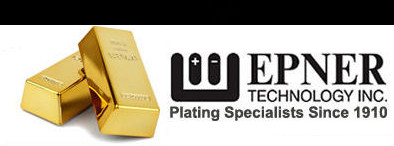-
Laser Gold plating reflectivity is greater than 97% at 0.7 microns and 99% from 2 Microns out till the Far Infra Red when measured on a low-scatter substrate, measured at 6 degrees angle of incidence.
Read More
-
Epner Technology’s Laser Gold consistently achieves an emissivity of < .02 when applied to a polished substrate.
Read More
-
Laser Gold plating hardness can exceed 180 on the Knoop scale when measured by the diamond-indenter method of ASTM-B-578-87.
Read More
-
Laser Gold doesn’t tarnish, and exhibits superb corrosion resistance in and of itself.
Read MoreThanks to this stability, Laser Gold has been the NIST (NBS) IR Reflectance Standard (#2011) for nearly 20 years.
Read More
- Purity
-
Laser Gold is pure (.9999). Combining this purity with a hardness of almost 200 Knoop is what makes Laser Gold plating unique in the world of optical coatings.
Read More
-
Epner’s diffuse Laser Gold coating specified primarily on integrating spheres, has been measured at Schmitt Measurement Systems, Inc. The measurements were made at 10.6 microns on a mechanically diffused surface.
Read More
-
When applied to metal optics, there is no perceptible change in performance in either the S or P polarization plane. Laser Gold plating does not increase scatter, in fact, certain customers have actually reported reduced scatter after Laser Gold plating. When Laser Gold is applied over glass, Zerodur and BK7 substrates, differences in the S & P polarization plane have been detected. In other words, processes that involve vapor deposition prior to the Laser Gold application may have an impact.
Read More
